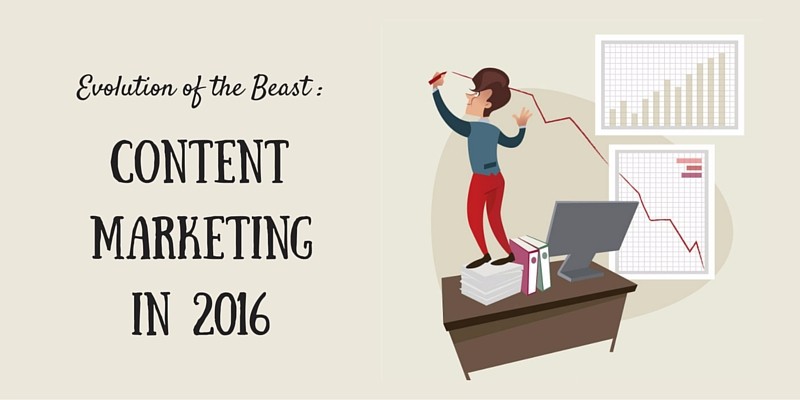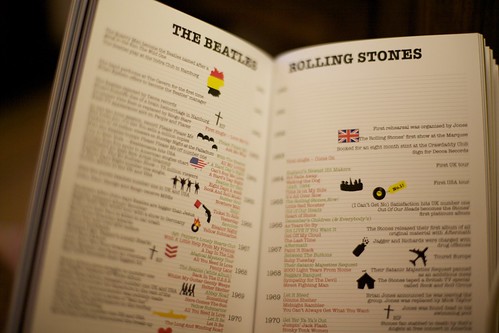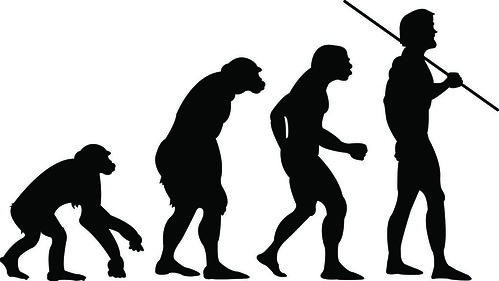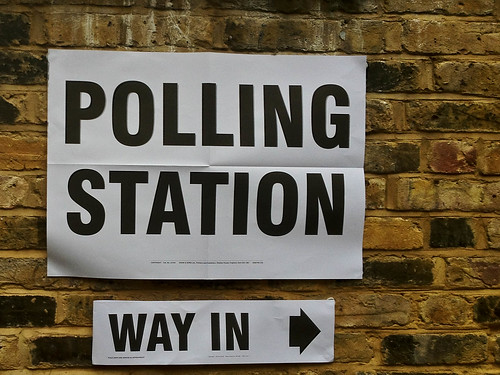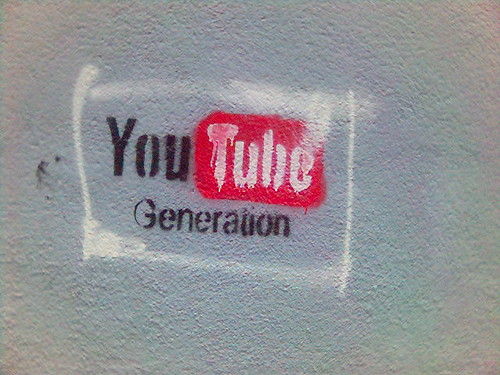Content has been king for a few years now, but is it still lord of the manor, queen of the castle, um…duke of the duchy (okay, that last one is a bit of a stretch)? The short answer? Yes. The slightly longer answer? Yes, but…
“Content” is changing. It’s a living, breathing animal, but like any beast (and let’s face it, content marketing is a beast), it evolves over time. It’s not just blog posts and a Facebook Page anymore.
Content?
But before we open it up and play doctor, we need to define a few things. What exactly do we mean by content, and content marketing? What’s the difference between inbound and outbound marketing? What do you call the foam on a glass of beer? And what the heck is the day after tomorrow? These are the things we need to know moving forward.
Content Marketing
Creating and distributing valuable, useful, and consistent content to attract a defined audience and achieve a specific goal. The term didn’t really take off until early 2012, but it’s witnessed steady growth since then.
According to an authority no less than Seth Godin:
Content marketing is the only marketing left.
Sheesh. If that’s not enough to keep content awake at night, nothing will.
Neil Patel provides a fantastic advanced guide if you want to really immerse yourself in it. Dive right into the deep end.
Content
The things that are included in something; the information made available by a website or other electronic medium. Content includes blog posts, newsletters, articles, case studies, white papers, and a slew of others.
A full 59% of marketers create at least one piece of content each and every week (with nearly as many creating one piece each DAY). It can quickly eat a disproportionate amount of time and energy like some gluttonous blob. But it’s worth it, as more and more buyers use content to research their purchasing decisions.
Inbound Marketing
Often used interchangeably with content marketing, the two are not exactly the same thing. Inbound refers to marketing activities that bring visitors to you (your website or blog, your online store, your social media profile). This is frequently – but not exclusively – done with content marketing.
Outbound Marketing
Traditional marketing channels like television and radio ads, direct mail, trade shows, cold calls, and print ads fall into this category. The business initiates the contact and thrusts their message upon everyone…whether we like it or not. The bloom, though, is definitely off this rose.
The Inbound vs Outbound Debate
Consider:
- 86% of us skip television commercials (it’s just so easy with PVRs and Tivo, not to mention the millions of us watching television via commercial-free streaming services like Netflix)
- 44% of all direct mail is NEVER opened (if you’re like me, you immediately toss it in the recycle bin or use it to make paper airplanes)
- 200 million Americans have registered on the “Do Not Call” list, and most of us screen our calls and ignore unknown numbers, anyway
Nope. We generally don’t care for outbound tactics. The whole inbound vs outbound debate is DOA…kind of like the whole Beatles vs the Rolling Stones (Beatles), coffee vs tea (coffee), and baseball cap vs top hat (top hat…but that may be just me).
Inbound cost-per-lead is 62% less than outbound, you’re 3x as likely to see a higher return-on-investment (ROI), and 3 out of 4 marketers are prioritizing their inbound efforts. Heck, even outbound marketers think outbound tactics are past their best-before date!
So yeah, inbound baby!
Back to the Content
Content marketing has been gaining traction since at least 2012, with widespread usage and appeal across the board.
- 91% of B2B and 86% of B2C marketers use content marketing
- 80% of people like finding out about companies via content
- 70% would rather learn about them via articles rather than ads
- 78% perceive a relationship with a business because of their content marketing (and relationships are everything in today’s uber-competitive global market)
- 67% of people are more likely to buy from a brand they follow on Twitter
That’s a lot of facts and figures, n’est pas? If you take only one thing from it all, take this:
Content marketing is cheaper and more effective than its traditional brethren, and almost everyone is using it.
Oh, and beer foam is called barm, and the day after tomorrow is overmorrow. Just fyi.
The Evolution of Content Marketing
But before we can look at where content marketing is in 2016, we need to look at where it came from. Examine the past to consider the future. Content marketing has changed a lot since hitting the mainstream in the past few years.
In the beginning was the word, and the word was with blogs, and the word was blogs. That’s essentially how this whole content rollercoaster got started. Short (250-500 words), keyword-stuffed blog posts. Lots of them. Businesses wrote them, saturated them with whatever word they thought people were searching for online, and published them on their platform. Done and done. But on the evolutionary chain, this was but a unicellular amoeba.
Over time, people noticed that longer posts were better. More likes, more shares, more love from Google (and it was all about the Google love…they were the search engine equivalent of the most popular kid at school. In with them, in with everyone). So those posts got longer. Content evolved.
But it didn’t stop there. It divided (additional channels and tactics). It got more complex (images, gifs, infographics, videos). It increased its value (useful and relevant to its users) and decreased its filler (keyword stuffing not only stopped working, it also got you blacklisted by Google).
Content marketing is virtually unrecognizable to its earlier self, like a caveman looking at a yuppie.
The Modern Marketing Makeover
Things are different in 2016 (does anyone else still write 2015 on their cheques? Not that I’m still using cheques…because it’s 2016) and content marketing has moved well past its humble beginnings. A simple blog doesn’t do it anymore. You need engagement.
Traditional marketing talks at people. Content marketing talks with them. ~Doug Kessler
Experts love to prognosticate on where it’s all going, but it’s a crapshoot. All we can do is educate ourselves on the current best practices and try to keep up.
So, what does content marketing look like today? Let’s take a peek behind the curtain.
Podcasting
It’s the invasion of the podcast people!
Podcasts – audio files available for download to your computer or media player – have arrived in a big way. The name itself is a combination of iPod and broadcasting. These digital files offer useful information, updates, tutorials, stories, how-tos, (pre-recorded) Q&A, and so forth.
Their popularity is easy to understand: great mobility (users can listen on their computer, smartphone, MP3 player, or in the car), they allow us to get to know the man or woman behind the brand (the podcaster), and they require little in terms of equipment or software. Many marketers and brands use them regularly, uploading a new episode on a fixed schedule (daily, weekly, monthly). Subscribers keep up-to-date using the latest Android or iOS podcast apps.
Just how popular? 17% of Americans aged 12 or older have listened to a podcast in the past month, 33% have listened to a podcast at least once at some point, and 49% have at least heard of them. Libsyn – one of the largest podcasting sites – hosts over 25,000 podcasts, with 2.6 billion download requests in 2014. That’s a lot of reach!
And while only 3% of marketers use them in social media marketing, 32% want to learn how, and 23% plan to use it more. Why? Aside from the increasing popularity and reach, two-thirds of listeners don’t mind sponsorship messages compared to only 6% for television and radio users. That’s a game changer.
Want to give it the old college try? You just need an audio recorder (most laptops and smartphones have one already), and a microphone (ditto). If it takes off, you can always invest in some better equipment later. Be yourself, be real, be useful, and check out the best sites to host your podcast. Voilà!
Interactive Content
Interactive content is taking over. And why not? It’s fun, hip, and engaging. It attracts and keeps attention. And gosh darn it, people really enjoy it (admit it…you’ve taken a few personality tests online). Isn’t that what content marketing is supposed to be about?
- 91% of buyers prefer it to more traditional content
- 88% of marketers say it’s more effective at standing out compared to static content
- 38% say it’s effective for increased sharing
- 93% believe it’s effective at educating the buyer
- interactive content generates conversion moderately or very well 70% of the time compared to just 36% for static content
Mobile apps, personality tests, quizzes, polls, surveys, calculators, contests, galleries, brackets, and interactive white papers and infographics. It connects with users because it’s more than just a passive form. We do. We learn. We enjoy.
Interactive content platform Playbuzz creates a 94% item completion rate, 11% share rate, and 4.5 attention minutes per session. Wow. And most other providers claim similar numbers.
Ready to jump in? Services include Playbuzz, ion interactive, SnapApp, BrandBox, and Apester, with prices to match any budget (from free to definitely not free). Or start small…one of the simplest introductions to the interactive universe is the humble poll. Create with Twitter polls or Polls for Facebook. Ask your followers and fans. Track and share results. Start a conversation.
Cue the Visuals
It’s a fact: we process faster and remember more when information is presented visually. Content with images gets more likes, shares, up-votes, and retweets. Photos, pictures, and videos get 100% more engagement. Content with visuals gets 94% more total views. We live in a visual world.
If you’re not creating visual content, why in tarnation not?
Owned by Facebook and fully integrated with its robust targeting capabilities, powerful business promotion options, 400 million active users, and an influential user base under the age of 35. And lest you believe that the platform only works for visual products and services, think again. It can work for everyone, regardless of product, size, or location.
The platform frequently takes a backseat to its hipper, younger colleagues, but you shouldn’t ignore its appeal. It’s a great source for connecting, especially with women. 85% of its 176 million registered users are female. You can use it to pin and share images, illustrations, and infographics, of course. But you’re also able to share videos, slideshows, and even podcasts. It’s your one-stop content shop.
Snapchat
Snapchat is here to stay (just accept it), and its influence on the digital marketing realm is getting scary big. The stats speak for themselves:
- 71% of users are under 25
- 200+ million active users
- One-third of US 18-34 year olds have an account
- 7 billion video views each day
- photos, videos (10 seconds), live events, promos, coupons, ads…58% of college students said they were likely to purchase from a business that sent them a coupon on the platform.
Share photos and videos: your product(s), your employees, your locations, behind-the-scenes, special events and milestones. Create Snapchat Stories by stringing photos and videos together to create a narrative that lasts 24 hours. Create and share unique geofilters. Sponsor a lens. If you haven’t tried your hand at Snapchat, the time is now.
Infographics
Just what is an infographic? It’s a visual image such as a chart or diagram used to represent information or data. And visual information is easier to digest, easier to remember, and easier to share. That’s the content marketing trifecta.
- Increases web traffic by an average of 12%
- Infographic demand increased a whopping 800% between 2010 and 2012
- 30x more likely to be read than a text-based article or blog post
Platforms for making them yourself include Easel.ly, Piktochart, and Infogr.am, while Visually and 99Designs can connect you with talented graphic designers to make them for you. Pick your poison.
Video
Videos are popular. Very popular. Incredibly, extremely popular. And you can find, create, and watch them on virtually every platform. Consumers love them. And marketers love them, too (use of video increased from 8% to 58% between 2013 and 2014, and continues to lead the charge).
If anything, you’re spoiled for choice when it comes to your video channels.
Upload and Share
- Video on Twitter allows you to record, upload, or share video with your followers. The stats? 320 million users, with 100 million of those active daily users.
- Vine is a platform for sharing 6 second looping videos on Twitter and Facebook. The stats? 200 million active monthly users, 10% of the top brands on Twitter use it regularly, 12 million vines are uploaded to Twitter daily, and it commands a 14% reach of the US digital population.
- Your Instagram account can handle 3-15 second video clips. The stats? 400+ million users, 75 million daily users, 35% check the service multiple times each day, and 43% of the Top 100 brands post daily.
- Facebook claims 1.55 billion active users, and nearly 8 billion daily video views on the platform.
Live Streaming
An emerging trend in the video world is streaming, the online broadcast of real-time, live footage. It offers greater connection and engagement capabilities than pre-recorded video.
- Periscope is the current streaming service du jour. The stats? 10 million users, 350,000 hours streamed per day, and 15% of the top brands on Twitter use it regularly. Create an event, let your fans know about it, and then broadcast your smiling mug to the world. And you can even post the recording of your stream afterwards. Win-win.
- Meerkat is nearly identical to Periscope in every way, with 2 million users.
- Blab, Hangouts on Air, and Facebook Live allow you to host a live event, discussion, debate, or product unveiling. Invite people to your digital casa.
YouTube
The video goliath gets its own category…because it’s just that big. It’s the second largest search engine on the internet – bigger than Bing, Ask, Yahoo, and AOL combined! – behind only Google. And nearly 1 out of 2 internet users are on the platform. How’s that for reach?!
- 300 hours of video uploaded every minute
- 6 billion hours viewed each month
- 1 billion unique visitors every month
- 9% of US small businesses are on the platform
YouTube reaches more US 18-34 year olds than any cable network, 82% of American 14-17 year olds are on it, 81% of American millennials, 58% of American Gen Xers, and 43% of American Baby Boomers. And yet, 80% of its monthly traffic comes from outside the States. It’s a far-reaching and global audience starving for more. Create your own channel. Share your stuff. The platform has grown-up and moved past videos of cats and people getting hit in the crotch (although you can still find those if that’s your thing…hey, no judgement).
Should you be creating and sharing video content? Yes. Yes you should.
Best Practices
But how to put it all together? You need a good mix. The best marketers know this, and use an average of 13 content tactics. Emulate them. Content marketing in 2016 means utilizing the tools and services available to you. It means reaching out to your customers, prospects, and fans on the platforms they love, and in the forms they want.
- Video? Yes. Video is already extremely popular, and it will account for nearly three-quarters of online traffic by 2017. Get in on that!
- Podcasting? Sure. The medium is growing, and it’s dead simple to do. Launch a podcast today.
- Visuals? Absolutely. This is a must! Infographics and other images increase your reach, appeal, and engagement. You need all of that.
- What about traditional blogging and articles? Yes and yes! It shouldn’t be the lone horse in your content marketing stable, but it still has a place at the table. More than half of marketers say “original written content” is their most important strategy, marketers that prioritize blogging are 13x more likely to see a positive ROI for those efforts, and businesses that blog 15 times per month generate on average 1200 new leads per month. So yeah, blog away.
- Social media? Of course. 9 out of 10 marketers still rely heavily on social media. It’s fun, it’s popular, and it’s the best place to share your content and spread brand awareness.
If your content strategy includes podcasts, videos, visuals (infographics, illustrations, and images), original written content, and social media, you’re ahead of the curve. Kudos to you!
You do have a strategy, right? It’s not enough to create and send it out into the big, bad world. You need objectives. You have to track, assess, and interpret. What do you want your content to do for you? Identify it early on in the process. Some of the most common goals include brand awareness, lead generation, conversion, customer service, loyalty/retention, and upselling. What’s yours?
And last but not least, a few one-offs and reminders:
- It’s not about you. It’s about them. Create content that is useful and relevant. Only push or sell RARELY in your content calendar. If it’s salesy or pushy too often, people will disengage. You can promote once for every 5-6 other posts (Spokal is awesome!).
- Ensure your content is mobile ready. People access their online content increasingly while on the go. 399 million people, for example, only access Facebook on mobile. Can you afford to alienate them with unresponsive content and posts? No. No you can’t.
- Remember that your employees (if you have any) are your best cheerleaders. Employee advocacy reaches further and carries a heavier stick than any other. Have them share your content and promote your brand.
- Curate interesting material, repost your own on a regular basis, and repurpose your content whenever you can.
- Keep abreast of current findings on how often to post, the optimized times to post, and the ideal length of posts…but don’t stay a slave to them. Content marketing is not one size fits all.
In the beginning was the word. And it was good. But content marketing has evolved into a multi-limbed beast that can fly, breathe underwater, turn invisible, and bake a soufflé. It’s a Jack-of-many-trades.
Is it worth it? A resounding hell yeah!
What’s your best content advice for 2016? Leave your thoughts in the comments below.
